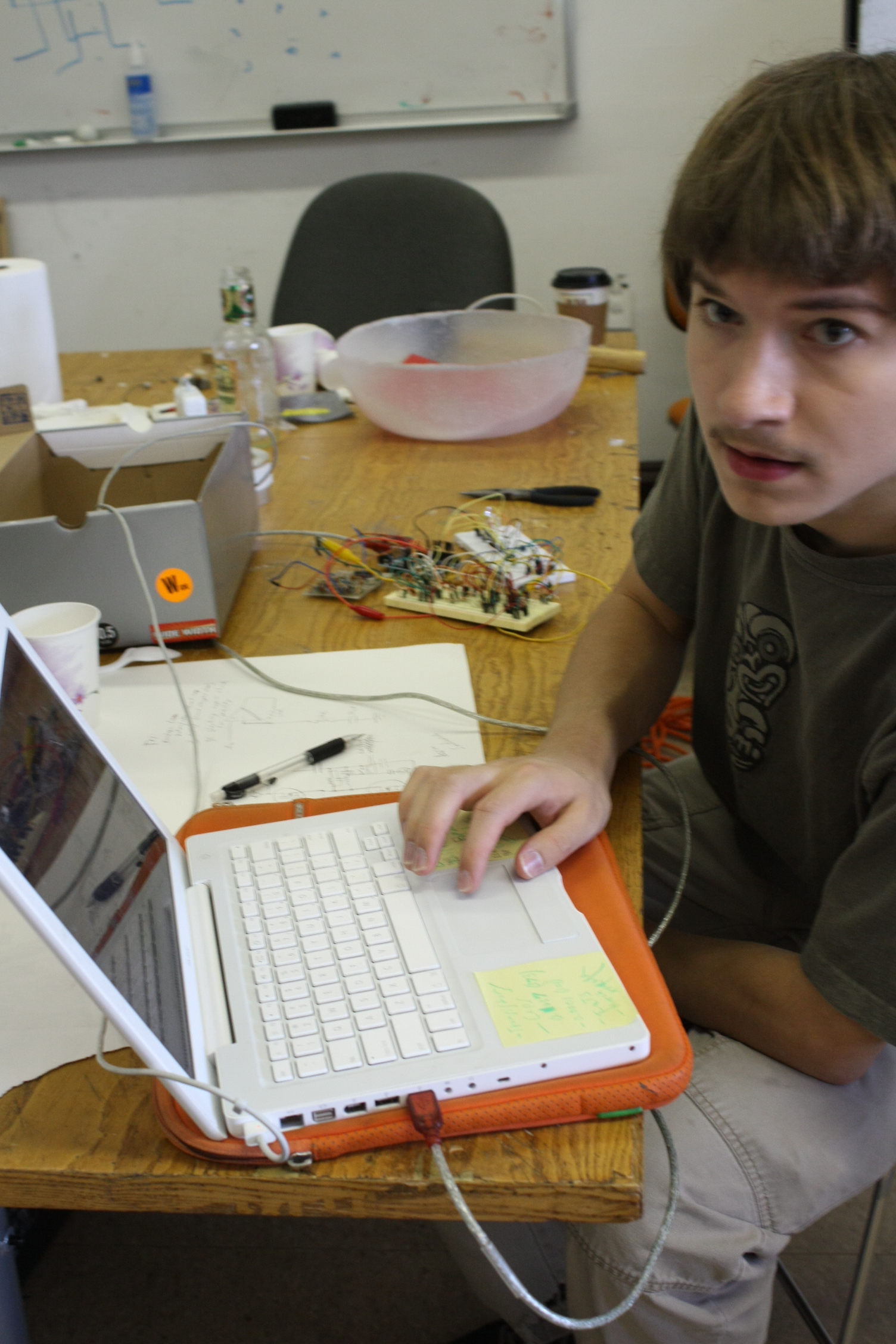Student: Luke Kambic (CMU; Making Things Interact, Fall 2009)
“It’s an experimental platform for tangible interaction that can be integrated into the walls of a structure. My main intention was a staircase that keeps its steps hidden in a wall and ejects them as users walk up, retracting them again as they pass. In certain situations this could free up a little floor space in a house, but it’s mostly supposed to be cool and beautiful.”
A sprocket on a power window motor engages with a length of #35 chain attached to a board at both ends by screws running through the links. The shapes of the mating parts make it easy to engage and disengage the sprocket without much force, but when it’s engaged and delivering turning force it tends to stay there. Chains and sprockets are designed for some of this type of sliding so they probably won’t wear too fast.
I stuck the motor on a plate with a single simple pivot point consisting of a screw through stacked washers. A cheap solenoid was attached to a lever arm to shift the motor and disengage the sprocket. The return spring of the solenoid provides enough force to re-engage it as long as the teeth are well aligned with the chain. The mechanism worked as a clutch and brake, because the motor uses a worm gear and its shaft won’t budge when it’s not under power.
